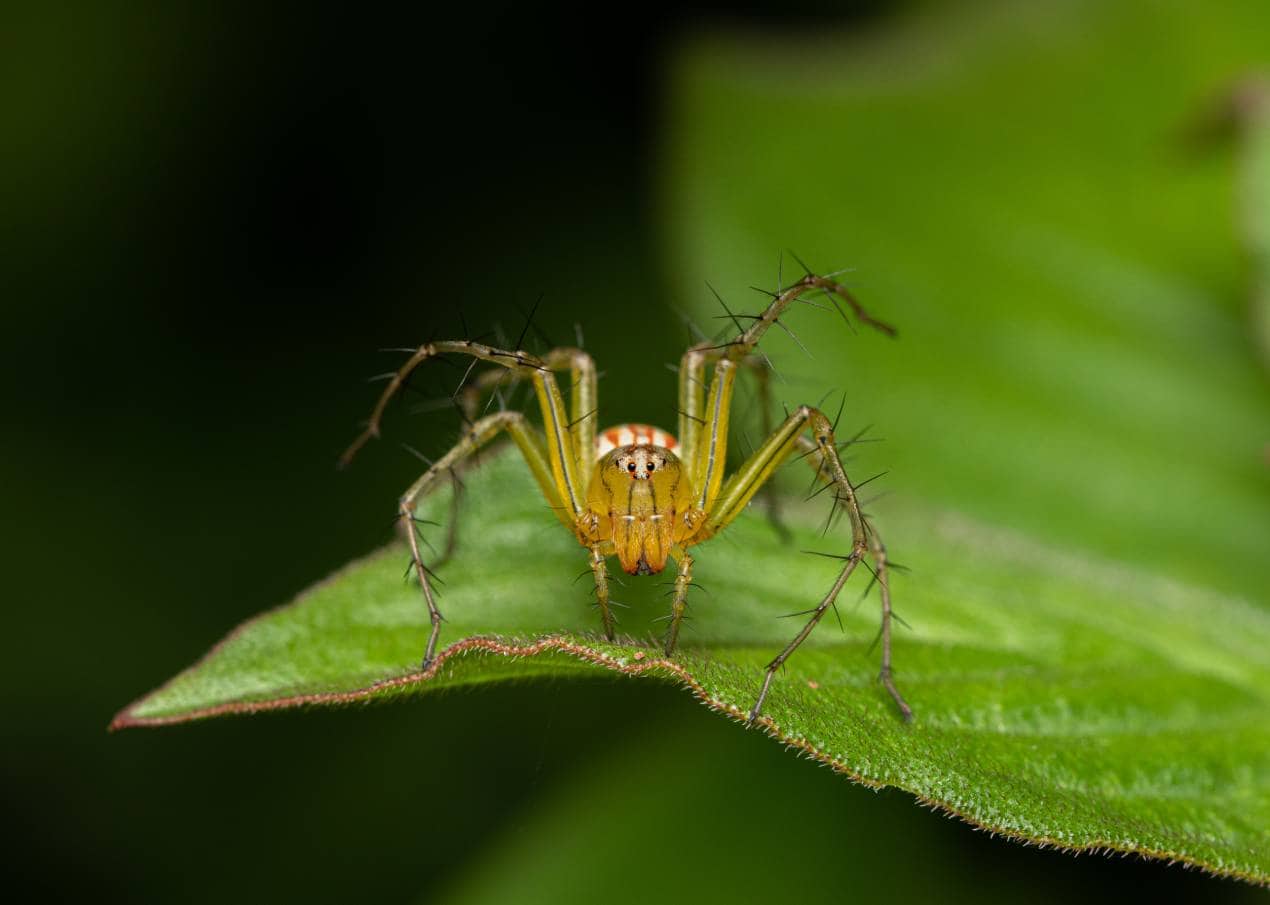When it comes to finding spiders in Arkansas, all you have to do is check the dark corners of your house, garage, or shed, and you’ll likely find a variety! The Natural State has a fascinating array of spiders that have a range of colors, shapes, and even hunting styles.
As spooky as many people find spiders, these arachnids are a vital part of maintaining the ecosystem by controlling insect populations. This doesn’t just keep us from being overrun by bugs, but it also helps control diseases spread by insects like mosquitos.

The 10 Spiders Found in Arkansas
1. Brown Recluse
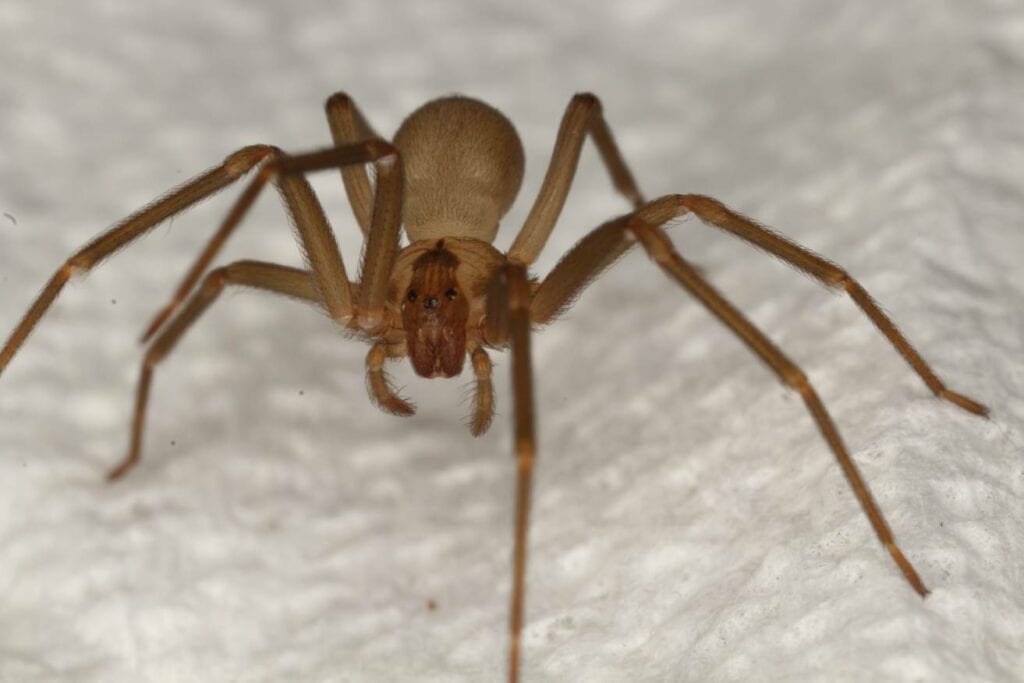
| Species: | L. reclusa |
| Longevity: | 1–2 years |
| Good to own as a pet?: | No |
| Legal to own?: | Yes |
| Adult size: | 0.6–2 cm |
| Diet: | Carnivorous |
The Brown Recluse is often called a poisonous spider, but they are actually venomous because their toxin is transferred via a bite. They are sometimes referred to as “Fiddleback spiders” due to the distinct fiddle shape on their back. They are one of the two dangerously venomous spiders in the state, though they have a worse reputation than they deserve.
As the name implies, these spiders are reclusive, often being found in dark places like wood piles and cardboard boxes, so most people encounter them when working outdoors or cleaning spaces like garages and sheds. These spiders have necrotizing venom, which means that it causes tissue to die and break down. Their bites are typically recognizable by a red or purple area with a black center that begins to pit.
2. Southern Black Widow
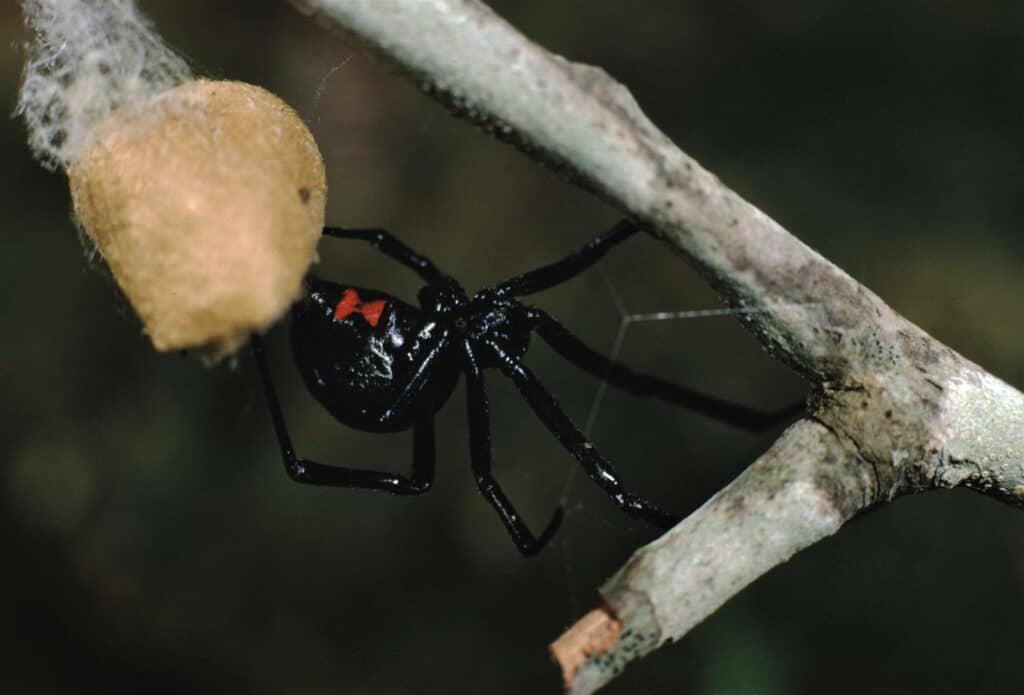
| Species: | L. mactans |
| Longevity: | 1–3 years |
| Good to own as a pet?: | No |
| Legal to own?: | Yes |
| Adult size: | 0.6–1.5 cm |
| Diet: | Carnivorous |
The Southern Black Widow spider is the other dangerously venomous spider in the state of Arkansas and is probably the most well-known venomous spider in the United States. The females are larger than the males and are known to kill them after mating, which is where they get their “widow” name. While most people recognize the round black body with the red hourglass of the female, the male Black Widow is usually black, tan, or grey and has a narrower body. These spiders typically keep to themselves in dark areas but will bite if disturbed, which often leads to unexpected bites in places like garages.
Black Widows produce venom that contains powerful neurotoxins, which help them incapacitate their prey. In humans, these bites are not usually fatal except in children and people with certain medical conditions, but they can still lead to significant muscle pain, nausea, vomiting, shortness of breath, swelling, and itching. Minor bites can typically be treated with cold compresses and over-the-counter anti-inflammatory medications.
3. Dotted Wolf Spider
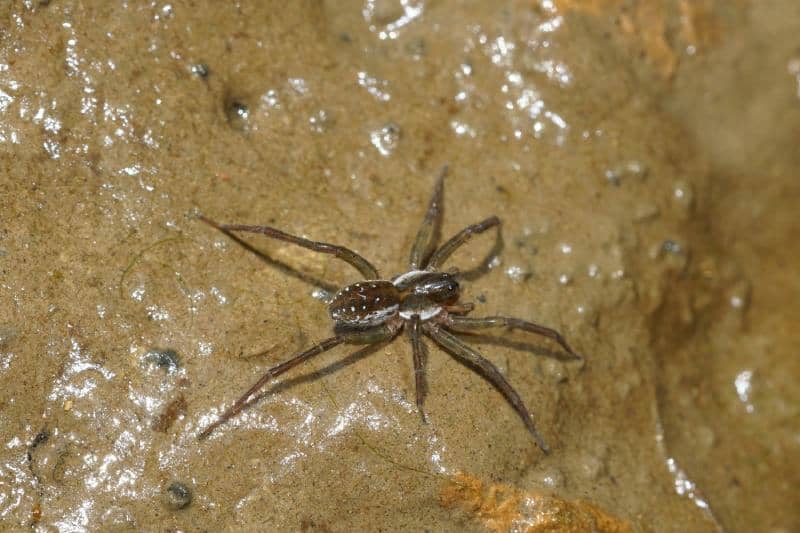
| Species: | R. punctulata |
| Longevity: | 1–2 years |
| Good to own as a pet?: | No |
| Legal to own?: | Yes |
| Adult size: | 1.2–1.5 cm |
| Diet: | Carnivorous |
The Dotted Wolf spider fits the “creepy crawly” bill due to their tendency to scurry around, often crossing paths with people. What many people don’t realize is that Dotted Wolf spiders, along with other types of Wolf spiders, are extremely agile and hunt by chasing down prey. They do not build webs, so they tend to be more mobile than web-building spiders. They are non-venomous and are more likely to run than bite. Dotted Wolf spiders have strong maternal instincts, and females can often be seen carrying their young on their abdomens until they are old enough to survive on their own.
4. Arkansas Chocolate Tarantula
| Species: | A. hentzi |
| Longevity: | 10–25 years |
| Good to own as a pet?: | Yes |
| Legal to own?: | Yes |
| Adult size: | 3.5–5 cm |
| Diet: | Carnivorous |
One of the largest spiders in the state, the Arkansas Chocolate Tarantula can be imposing, but these spiders are content to stay far away from humans. They have hairy bodies and legs, and some females have been known to live up to 25 years in captivity. They may be found in abandoned reptile or mammal burrows or in naturally occurring crevices and small caves.
These spiders reach sexual maturity around age 10–11, and males usually die shortly after mating. Females carry fertilized eggs from fall to the following summer before laying 200–800 eggs. The hatchlings will stay with the mother until they are large enough to live on their own.
5. Black-Footed Yellow Sac Spider
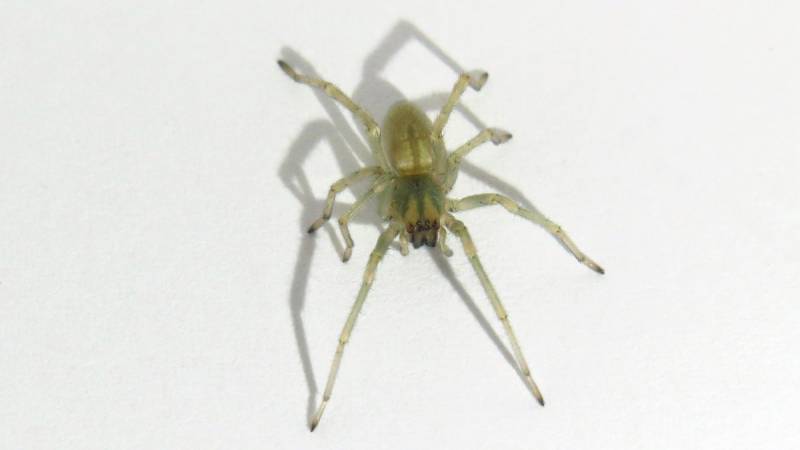
| Species: | C. inclusum |
| Longevity: | 1–2 years |
| Good to own as a pet?: | No |
| Legal to own?: | Yes |
| Adult size: | 0.5–0.8 cm |
| Diet: | Carnivorous |
The Black-Footed Yellow Sac spider is known for the silky sacs that they spin instead of webs, spending most of their time inside these sacs, which are typically attached in hidden places like the undersides of leaves. Females build silk tubes that are used to contain their eggs and hatchlings for the first couple of weeks of life.
These are mildly venomous spiders whose bites have reportedly led to necrosis. However, some studies have shown that this doesn’t actually seem to happen. Nonetheless, these bites can lead to pain, swelling, and nausea.
6. Yellow Garden Spider
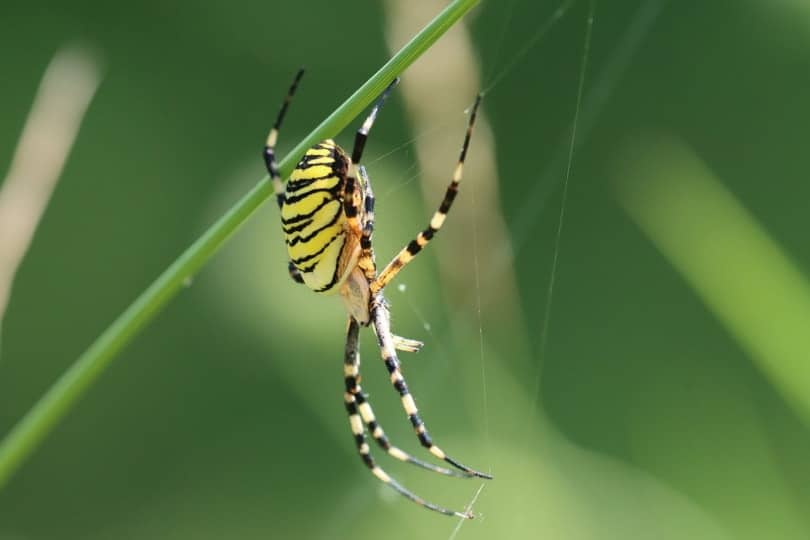
| Species: | A. aurantia |
| Longevity: | 1+ years |
| Good to own as a pet?: | No |
| Legal to own?: | Yes |
| Adult size: | 0.8–3 cm |
| Diet: | Carnivorous |
Sometimes called “Zigzag Spiders,” Yellow Garden spiders are brightly colored in yellow and black. They build webs up to 2 feet in diameter with a distinct zigzag pattern down the center that helps stabilize the web. Although these spiders are large, they are peaceful spiders that are great for pest control in yards and gardens.
They will only bite people when harassed, and even then, their bite tends to not be particularly painful, and their venom is not harmful to humans. They only live to around 1 year of age, though some females have lived beyond this expectation. Males die shortly after mating, and females lay their eggs in the fall and usually die once the first frost of winter occurs.
7. Spotted Orbweaver
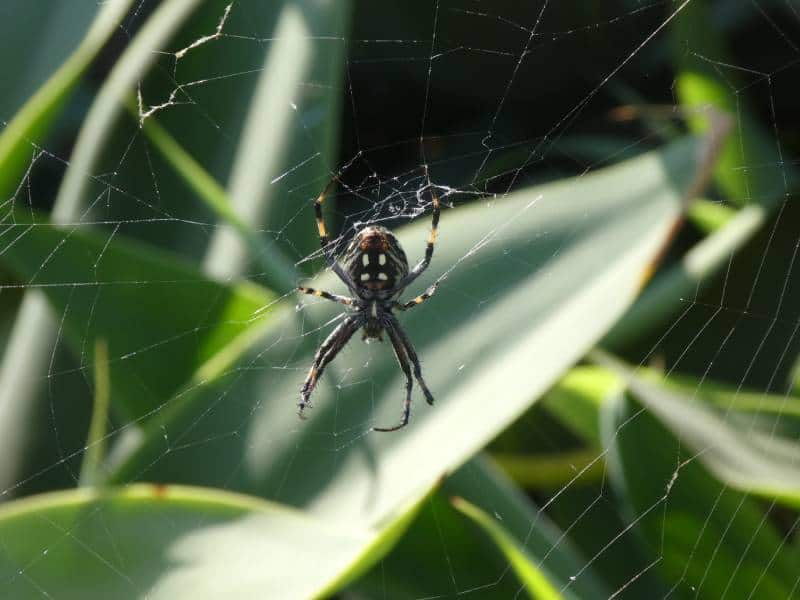
| Species: | N. crucifera |
| Longevity: | 1 year |
| Good to own as a pet?: | No |
| Legal to own?: | Yes |
| Adult size: | 0.5–1.7 cm |
| Diet: | Carnivorous |
The Spotted Orbweaver is a lovely spider that has a brown or black body with markings that are rust, gold, or orange. They are typically nocturnal and spend most of the daytime hiding near the edge of their web. In the fall, females may become diurnal when caring for eggs. They are peaceful and don’t often end up in people’s homes, though they are known to build webs in areas with lots of flying insect traffic, like around lights and porches.
8. Bold Jumping Spider
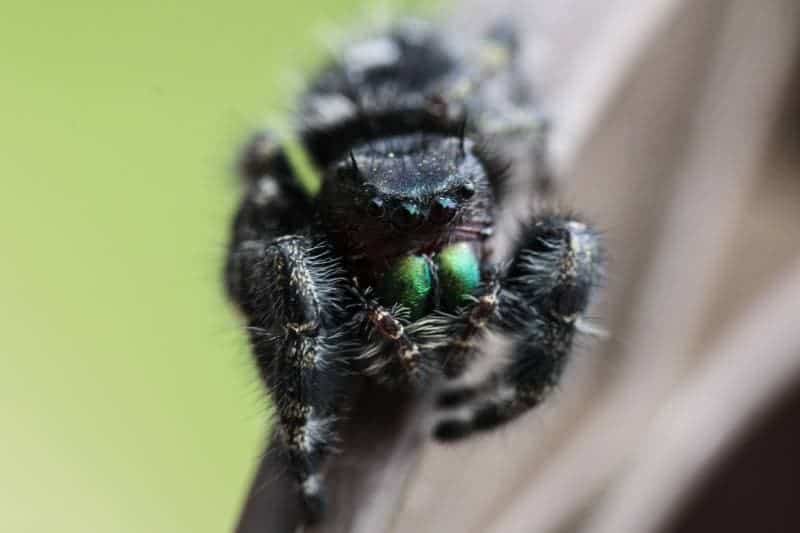
| Species: | P. audax |
| Longevity: | 1–2 years |
| Good to own as a pet?: | Yes |
| Legal to own?: | Yes |
| Adult size: | 1–2 cm |
| Diet: | Carnivorous |
Bold Jumping spiders are peaceful and seemingly curious, with many people reporting that they make good pets. They tend to have iridescent or metallic markings, and they exhibit interesting behaviors, like mating dances. They do not usually build webs, instead opting to chase down prey. They will spin webs for protection of themselves or their eggs, though. Although prevalent in Arkansas, they are the state spider of New Hampshire.
9. Long-Bodied Cellar Spider
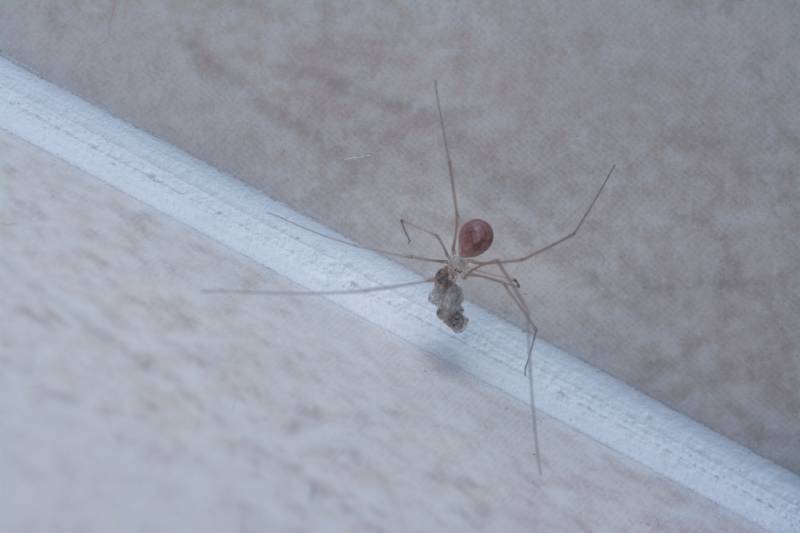
| Species: | P. phalangioides |
| Longevity: | 2–3 years |
| Good to own as a pet?: | No |
| Legal to own?: | Yes |
| Adult size: | 0.7–0.8 cm |
| Diet: | Carnivorous |
The Long-Bodied Cellar spider has long legs and a narrow body. They are common in cool, dark places like cellars, but they are also found in garages, sheds, and homes. They take a year to reach sexual maturity and can live for a couple of years beyond that point. Although some people claim that they are one of the most venomous spiders in the world—despite having fangs that are too small to harm people—this is false. They prefer to live near other Long-Bodied Cellar spiders and are known for leaving cobwebs behind.
10. Dark Fishing Spider
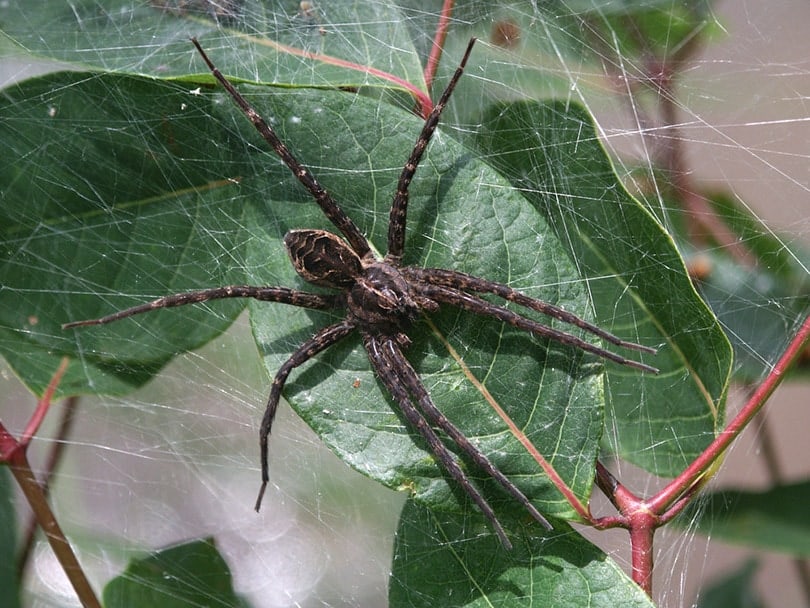
| Species: | D. tenebrosus |
| Longevity: | 1–2 years |
| Good to own as a pet?: | Yes |
| Legal to own?: | Yes |
| Adult size: | 0.6–2.5 cm |
| Diet: | Carnivorous |
Dark Fishing spiders resemble Wolf spiders with their body shape and imposing size, but they spend their lives near water, though they do end up in homes sometimes. They hunt by chasing down their prey, even running across the water’s surface to catch insects and small aquatic animals. If threatened, they may dive underwater to escape. They have strong maternal instincts, and females are known to aggressively defend their eggs. They will bite people if threatened.

Conclusion
Recognizing the important role that spiders play in Arkansas is necessary for maintaining their populations and supporting the ecosystem. Even the creepiest spiders are vital for the health of the natural environment. Choosing to recognize the support that spiders provide by controlling insects in and around your home can lead to a tolerant relationship between you and the spiders of the Natural State.
See Also:
Featured Image Credit by Varghese, Shutterstock
